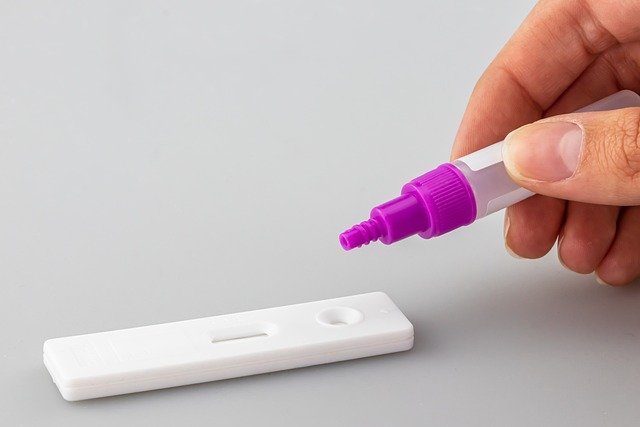Medical Assistant Training Insights in Canada
In Canada, individuals who speak English may consider a role in healthcare as a medical assistant. This position involves supporting medical professionals and ensuring efficient patient care. Training programs are designed to equip participants with the necessary skills and knowledge to excel in this vital field.

Medical assistants play a vital role in the Canadian healthcare system, serving as versatile professionals who bridge clinical and administrative responsibilities. Their presence helps improve patient flow, enhance medical documentation accuracy, and allow physicians to focus more on specialized care. As healthcare demands continue to grow across Canada, properly trained medical assistants have become increasingly valuable team members in clinics, hospitals, and specialty practices. The journey to becoming a qualified medical assistant involves structured education, hands-on training, and developing specific competencies aligned with Canadian healthcare standards.
Understanding the Role of a Medical Assistant in Healthcare
Medical assistants in Canada function as multifaceted healthcare professionals who support both the clinical and administrative aspects of medical practice. On the clinical side, they may perform duties such as taking vital signs, preparing patients for examinations, assisting physicians during procedures, collecting and processing laboratory specimens, and administering medications as directed. Administratively, medical assistants manage patient records, schedule appointments, handle correspondence, process insurance claims, and maintain office inventory.
The scope of practice for medical assistants varies somewhat across Canadian provinces, with some regions allowing for more advanced clinical responsibilities than others. This variation reflects the evolving nature of the profession as healthcare systems adapt to changing patient needs and resource constraints. Medical assistants often serve as a communication bridge between patients and healthcare providers, requiring excellent interpersonal skills alongside their technical abilities.
Training Pathways for Aspiring Medical Assistants in Canada
Canada offers several educational routes for those pursuing a career as a medical assistant. The most common pathway involves completing a diploma or certificate program at a recognized college or vocational institution. These programs typically range from 8 months to 2 years in duration, depending on whether students attend full-time or part-time, and whether the program includes an internship or practicum component.
Prospective students should seek programs accredited by provincial regulatory bodies or recognized by professional associations such as the Canadian Society of Medical Laboratory Science (CSMLS) or the Canadian Association of Medical Assistants (CAMA). Some provinces may have specific requirements for medical assistant training, so researching local regulations is essential before enrolling in a program. Many institutions offer flexible learning options, including evening classes, weekend workshops, and hybrid online/in-person instruction to accommodate working students.
Essential Skills Acquired Through Medical Assistant Training Programs
Comprehensive medical assistant training programs equip students with a diverse skill set necessary for success in healthcare environments. Clinical skills development includes phlebotomy techniques, electrocardiogram (ECG) administration, wound care, sterilization procedures, and basic pharmacology. Administrative training covers medical terminology, health records management, medical billing procedures, scheduling systems, and healthcare software applications commonly used in Canadian medical offices.
Beyond technical abilities, these programs emphasize critical soft skills such as professional communication, cultural sensitivity, ethical decision-making, and stress management. Many programs incorporate simulation labs where students can practice clinical scenarios before entering real healthcare settings. Additionally, training typically includes instruction on Canadian healthcare regulations, privacy laws, and provincial health insurance systems to ensure graduates understand the unique aspects of medical practice in Canada.
Practicum Experiences and Hands-on Learning
A distinguishing feature of quality medical assistant training programs is the incorporation of practical, hands-on learning experiences. Most reputable programs include a practicum component where students apply their classroom knowledge in actual healthcare settings under supervision. These placements typically range from 80 to 240 hours, depending on the program’s structure and provincial requirements.
Practicum experiences provide invaluable exposure to diverse medical environments, including family practices, specialty clinics, community health centers, and hospital departments. During these placements, students refine their skills while gaining insight into workplace dynamics and professional expectations. Many students find that these practical experiences lead to employment opportunities, as healthcare facilities often hire promising practicum students upon graduation. The networking connections established during these placements can prove invaluable for career advancement.
Certification and Professional Recognition in Canada
While medical assistants in Canada are not uniformly regulated across all provinces, professional certification is increasingly valued by employers as evidence of competence and commitment. The Canadian Society of Medical Laboratory Science offers certification for medical laboratory assistants, while the Canadian Association of Medical Assistants provides recognition for those in broader medical assistant roles. Some provinces have their own certification requirements or recognized credentials.
Certification typically involves completing an approved educational program followed by passing a standardized examination that tests both theoretical knowledge and practical skills. Many employers prefer or require certified medical assistants, making this credential an important consideration for career advancement. Maintaining certification usually requires continuing education to ensure medical assistants stay current with evolving healthcare practices, technologies, and regulations.
Cost and Financial Considerations for Medical Assistant Training
The investment required for medical assistant training in Canada varies considerably based on institution type, program length, and location. Tuition for certificate and diploma programs typically ranges from $8,000 to $20,000 for the complete program. Public colleges generally offer more affordable options than private career colleges, though the latter may provide accelerated completion timelines.
| Institution Type | Average Program Cost | Program Duration | Additional Costs |
|---|---|---|---|
| Public Colleges | $8,000 - $12,000 | 12-24 months | $1,000 - $2,000 for books and supplies |
| Private Career Colleges | $12,000 - $20,000 | 8-18 months | $1,500 - $2,500 for books and supplies |
| Online Programs | $6,000 - $15,000 | 10-18 months | $800 - $1,500 for materials and technology |
Prices, rates, or cost estimates mentioned in this article are based on the latest available information but may change over time. Independent research is advised before making financial decisions.
Many institutions offer financial aid options, including government student loans, grants, scholarships, and payment plans. Prospective students should also consider additional expenses beyond tuition, such as textbooks, uniforms, equipment, certification exam fees, and transportation costs for clinical placements. The return on investment typically comes through stable employment opportunities, with entry-level medical assistants in Canada earning approximately $18-25 per hour, depending on location and experience.
Career Outlook and Advancement Opportunities
The employment prospects for trained medical assistants in Canada remain positive, with consistent demand across various healthcare settings. Graduates can find opportunities in physicians’ offices, walk-in clinics, specialty practices, hospitals, long-term care facilities, and community health centers. The aging Canadian population and ongoing healthcare system reforms continue to drive demand for qualified support personnel who can enhance practice efficiency.
Career advancement for medical assistants may take several paths. Some professionals specialize in particular medical fields such as dermatology, ophthalmology, or cardiology. Others pursue additional education to transition into roles like medical office management, healthcare administration, or specialized technical positions. Some medical assistants use their experience as a stepping stone toward further education in nursing, physician assistant programs, or other allied health professions. Continuous professional development through workshops, certificates, and advanced training can significantly enhance career progression and earning potential.
This article is for informational purposes only and should not be considered medical advice. Please consult a qualified healthcare professional for personalized guidance and treatment.




